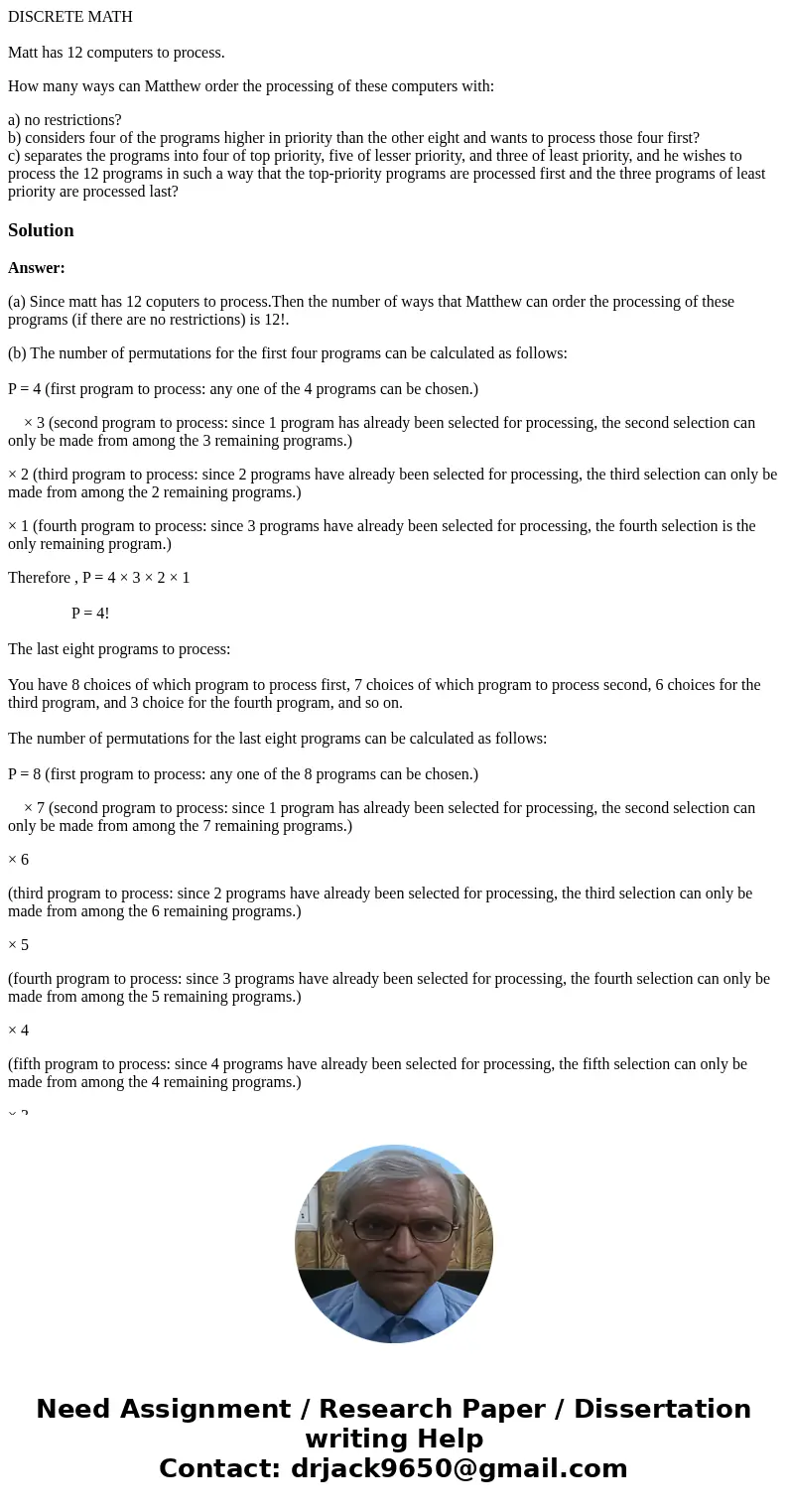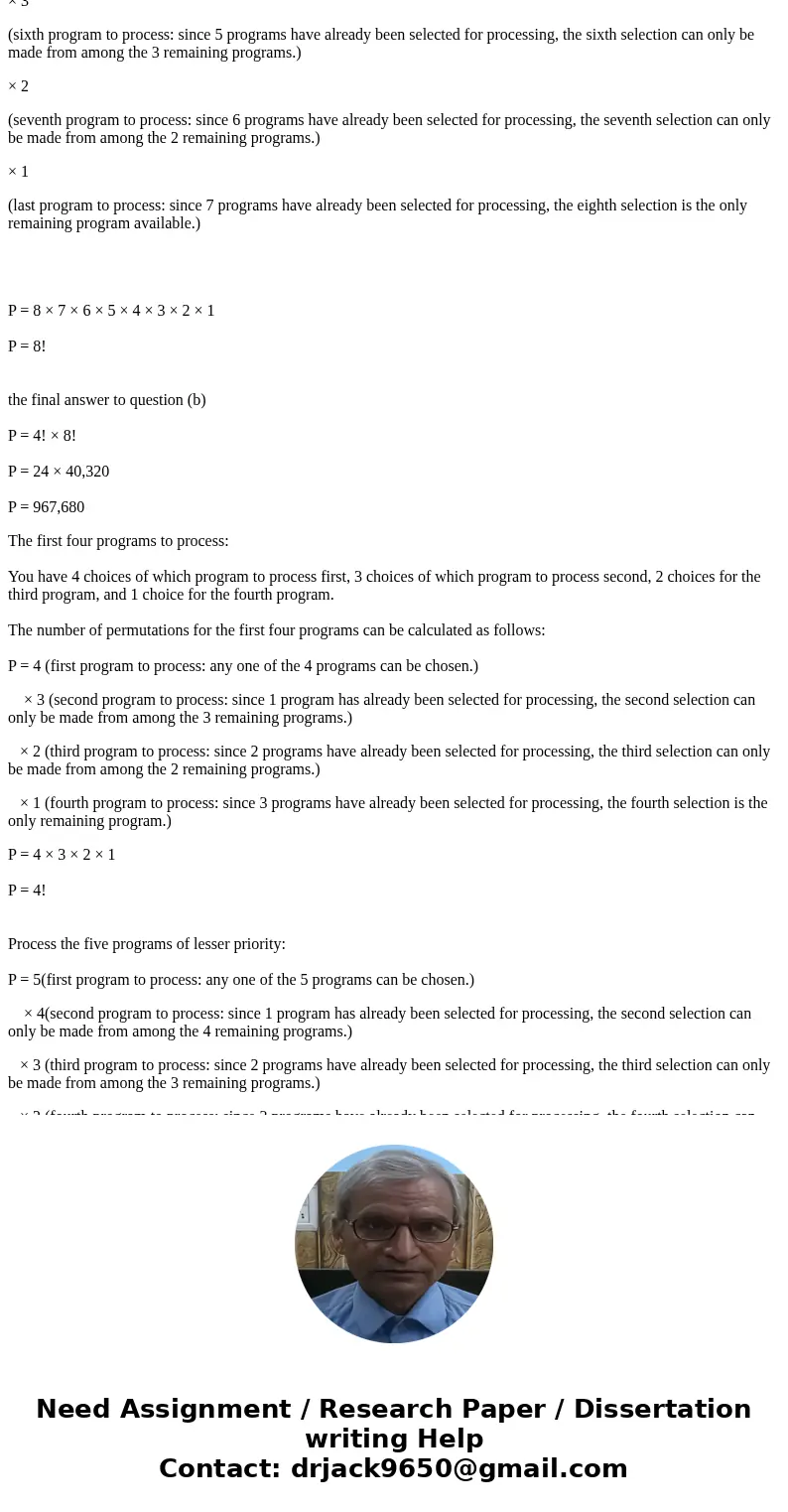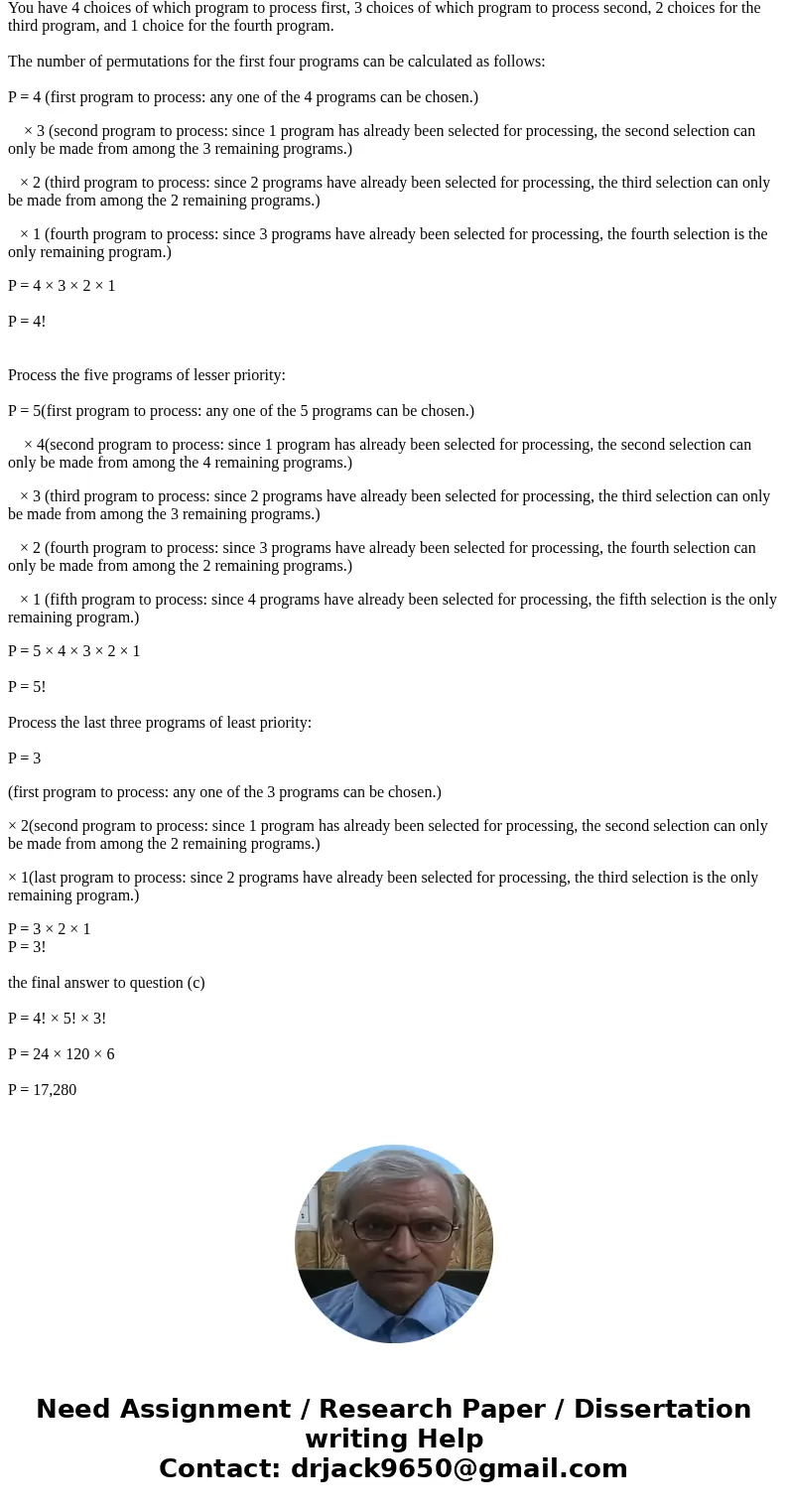DISCRETE MATH Matt has 12 computers to process How many ways
DISCRETE MATH
Matt has 12 computers to process.
How many ways can Matthew order the processing of these computers with:
a) no restrictions?
b) considers four of the programs higher in priority than the other eight and wants to process those four first?
c) separates the programs into four of top priority, five of lesser priority, and three of least priority, and he wishes to process the 12 programs in such a way that the top-priority programs are processed first and the three programs of least priority are processed last?
Solution
Answer:
(a) Since matt has 12 coputers to process.Then the number of ways that Matthew can order the processing of these programs (if there are no restrictions) is 12!.
(b) The number of permutations for the first four programs can be calculated as follows:
P = 4 (first program to process: any one of the 4 programs can be chosen.)
× 3 (second program to process: since 1 program has already been selected for processing, the second selection can only be made from among the 3 remaining programs.)
× 2 (third program to process: since 2 programs have already been selected for processing, the third selection can only be made from among the 2 remaining programs.)
× 1 (fourth program to process: since 3 programs have already been selected for processing, the fourth selection is the only remaining program.)
Therefore , P = 4 × 3 × 2 × 1
P = 4!
The last eight programs to process:
You have 8 choices of which program to process first, 7 choices of which program to process second, 6 choices for the third program, and 3 choice for the fourth program, and so on.
The number of permutations for the last eight programs can be calculated as follows:
P = 8 (first program to process: any one of the 8 programs can be chosen.)
× 7 (second program to process: since 1 program has already been selected for processing, the second selection can only be made from among the 7 remaining programs.)
× 6
(third program to process: since 2 programs have already been selected for processing, the third selection can only be made from among the 6 remaining programs.)
× 5
(fourth program to process: since 3 programs have already been selected for processing, the fourth selection can only be made from among the 5 remaining programs.)
× 4
(fifth program to process: since 4 programs have already been selected for processing, the fifth selection can only be made from among the 4 remaining programs.)
× 3
(sixth program to process: since 5 programs have already been selected for processing, the sixth selection can only be made from among the 3 remaining programs.)
× 2
(seventh program to process: since 6 programs have already been selected for processing, the seventh selection can only be made from among the 2 remaining programs.)
× 1
(last program to process: since 7 programs have already been selected for processing, the eighth selection is the only remaining program available.)
P = 8 × 7 × 6 × 5 × 4 × 3 × 2 × 1
P = 8!
the final answer to question (b)
P = 4! × 8!
P = 24 × 40,320
P = 967,680
The first four programs to process:
You have 4 choices of which program to process first, 3 choices of which program to process second, 2 choices for the third program, and 1 choice for the fourth program.
The number of permutations for the first four programs can be calculated as follows:
P = 4 (first program to process: any one of the 4 programs can be chosen.)
× 3 (second program to process: since 1 program has already been selected for processing, the second selection can only be made from among the 3 remaining programs.)
× 2 (third program to process: since 2 programs have already been selected for processing, the third selection can only be made from among the 2 remaining programs.)
× 1 (fourth program to process: since 3 programs have already been selected for processing, the fourth selection is the only remaining program.)
P = 4 × 3 × 2 × 1
P = 4!
Process the five programs of lesser priority:
P = 5(first program to process: any one of the 5 programs can be chosen.)
× 4(second program to process: since 1 program has already been selected for processing, the second selection can only be made from among the 4 remaining programs.)
× 3 (third program to process: since 2 programs have already been selected for processing, the third selection can only be made from among the 3 remaining programs.)
× 2 (fourth program to process: since 3 programs have already been selected for processing, the fourth selection can only be made from among the 2 remaining programs.)
× 1 (fifth program to process: since 4 programs have already been selected for processing, the fifth selection is the only remaining program.)
P = 5 × 4 × 3 × 2 × 1
P = 5!
Process the last three programs of least priority:
P = 3
(first program to process: any one of the 3 programs can be chosen.)
× 2(second program to process: since 1 program has already been selected for processing, the second selection can only be made from among the 2 remaining programs.)
× 1(last program to process: since 2 programs have already been selected for processing, the third selection is the only remaining program.)
P = 3 × 2 × 1
P = 3!
the final answer to question (c)
P = 4! × 5! × 3!
P = 24 × 120 × 6
P = 17,280



 Homework Sourse
Homework Sourse